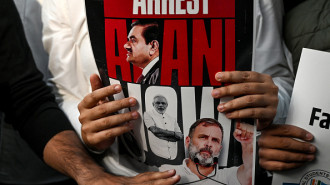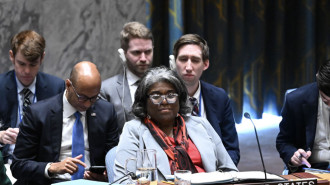Police deploy toxic spray at anti-Netanyahu march in Washington
A march to demonstrate against the state speech of Israeli Prime Minister Benjamin Netanyahu to a joint session of US Congress in Washington, DC on Wednesday started out peacefully, but was quickly dispersed when police used toxic spray against multiple protesters.
At midday, pro-Palestinian demonstrators gathered in the area of Capitol Hill to protest US support for Israel's war on Gaza and to demand an end to US military aid to Israel.
After several speeches by organisers, the march towards the US Capitol began on a hot and humid day. A diverse array of people and religious groups held signs showing their support for Palestinians, including Nepalese, Jews from North Carolina, and Presbyterians, among many others. Off to the side of the march, volunteers distributed water bottles.
Within minutes of the march getting under way, multiple demonstrators had collapsed by the side of the road, unable to get up. As the march continued, more people collapsed. Volunteers were quick to render first aid.
The collapse of dozens of protesters, many of whom had fallen in the middle of the street, quickly broke the momentum of the march, as people tried to help those in need by holding their heads up, dousing them with water and rinsing their eyes with eyedrops and water.
It quickly became apparent that demonstrators had come into contact with toxic chemicals. As people lay on the ground, many of them were coughing and had a bright red flush across the skin of their arms, legs and faces.
The New Arab asked a nearby police officer about the multiple instances of participants collapsing. He said it was because of the heat and that people should stay hydrated. TNA asked another officer wearing a New York Police Department badge if the police had used any toxic spray, to which he responded that the NYPD were not carrying any pepper spray. He said that if spray was used on protesters, it must have come from the Capitol Police.
During the march the Capitol Police issued a tweet saying they had used spray on protesters because they had become violent. There were no reports of violence, though some demonstrators acknowledged they had come close to the police barricades.
As demonstrators tried to clear out from the toxic fumes, some of those hit with the spray were able to confirm what they had seen and experienced.
"You could feel it. People were crying," Harper Asher, a demonstrator, told The New Arab. "It was like a big water stream." She emphasised that though it was chaotic, many bystanders were willing to help.
"I was screaming for help, and people came to help," she said, adding that the police did not give a warning before deploying the toxic spray. She said those who had sprayed them were wearing NYPD badges.
As the march continued, much thinner than minutes earlier, as people continued giving first aid to those lying on the ground, many demonstrators congregated in a small park under trees to escape the heat.
Taking a short break in the park was Michael King, a Native American leader from the Utah and Arizona area, who had come to Capitol Hill for a meeting with a political representative, but then decided to join the demonstration when he heard about it.
"I was initially out here to meet with our Arizona leaders on the Hill. However, I found out this demonstration was also taking place. And being Native American and indigenous myself, we also deal with the same struggles of colonialism and being removed from our land, so it felt really personal to me," he told TNA. "We are all united in our common struggle."
Despite the quick police dispersal of most of the protesters with pepper spray, he believes it was a success.
"As long as we got our message across, I feel that we've accomplished what we wanted," he said. "I think we sent out a clear message that we're here and we're not going anywhere."
Just as many people had settled onto the lawn, a loud popping noise that sounded like gunfire could be heard. This caused more people to flee.
TNA asked a nearby officer from the (local) Metropolitan Police Department about the noise, and he claimed it was fireworks that had come from the area of Union Station, where hundreds of demonstrators had congregated.
When TNA spoke with demonstrators at Union Station, there were no reports of fireworks, which would normally be used on a clear night, not an overcast day. Some protesters said they believed it was a noise used as a tactic to further disperse the crowd.
Much like the length of the march, the area around Union Station had a strong police presence. Dozens of officers from the NYPD formed a horseshoe line standing shoulder-to-shoulder across from the train station.
As the crowd stood in place, some people began whispering about more police coming in, with concerns over law enforcement completely surrounding the traffic circle where people were gathered and wondering how they would be able to leave.
At one point, in the area where the NYPD officers were lined up, protesters could be heard chanting: "Let him go!" in an apparent reference to someone getting arrested. The chants quickly turned to: "Let them go!"
Within minutes, the police had deployed more toxic spray on the crowd, causing protesters to quickly disperse, while many also fell to the ground while coughing.
Due to the multiple gatherings throughout Capitol Hill, there were conflicting reports over who had instigated the conflict between protesters and police. What was clear was that this was an unusual level of escalation. Many protesters who regularly attend these gatherings said this was the first time they'd seen such tactics used by law enforcement.

![Demonstrators protest at the Watergate Hotel where Israeli Prime Minister Benjamin Netanyahu is staying during his US visit. [Brooke Anderson/TNA]](https://www.newarab.com/sites/default/files/styles/image_345x195/public/2024-07/fba37d23-047e-47dd-b7d8-f01418f9e12e.jpg?h=ddb1ad0c&itok=feHQ4IPa)
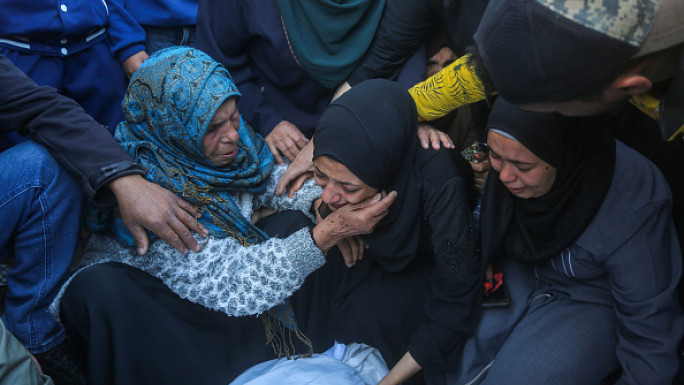

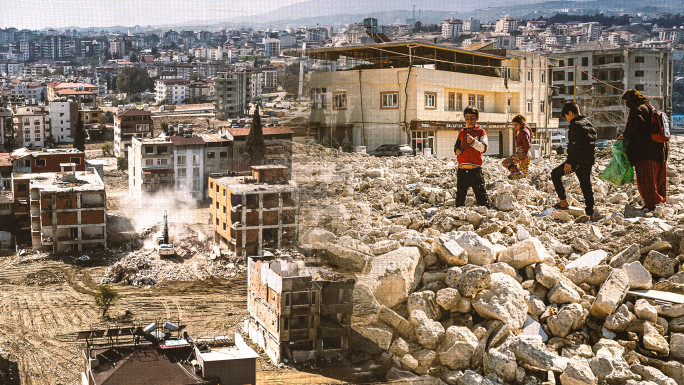
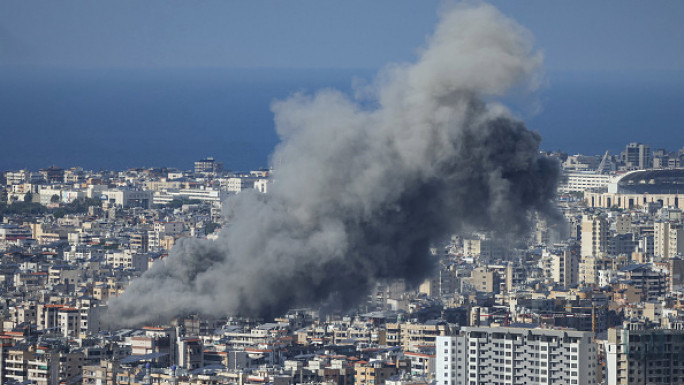
 Follow the Middle East's top stories in English at The New Arab on Google News
Follow the Middle East's top stories in English at The New Arab on Google News
